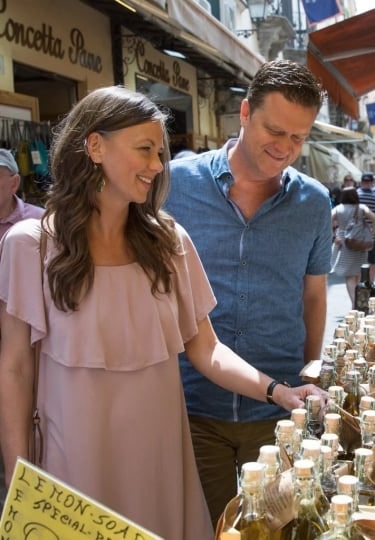Sorrento, Italy, is typically a top-five bucket list Italian destination. This sea-view southern city is, like its famous limoncello liqueur, an intoxicating shot of Italian summer charm.
The resort city (although more a town in size and feel) is spectacularly positioned high on sheer limestone cliffs on the Sorrentine Peninsula. It’s been a vacation destination since Roman times, such are its obvious qualities as a location for a spot of R&R. It’s also well placed near to other top-tier sights like the Amalfi Coast, Capri, and Naples.
There’s much to see and do here, whether you simply want to soak up the glamorous atmosphere and enjoy fine cuisine and a cooling dip, or prefer to explore the exotic gardens, exquisite architecture, and upscale shopping for which Sorrento is known.
Why Visit Sorrento?
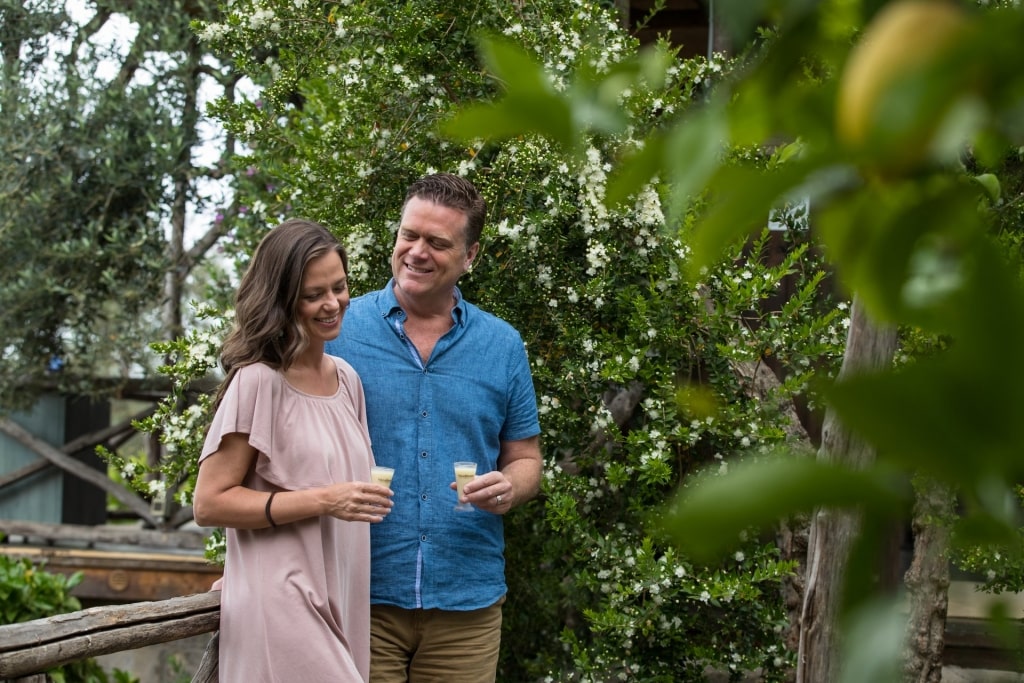
Sorrento
Often conflated with the colorful resort towns of the Amalfi Coast found on the Gulf of Salerno side of the peninsula, Sorrento has its own distinct identity and culture. It’s most famous for the production of the zesty aperitif, limoncello, produced from the city’s prolific lemon groves that fragrance the Lattari mountains rising up behind the town.
One of the most beautiful cities in Italy, the cobblestoned streets of Sorrento are characterized by artisan shops and the scent of the citrus and pine trees that offer shady spots to linger.
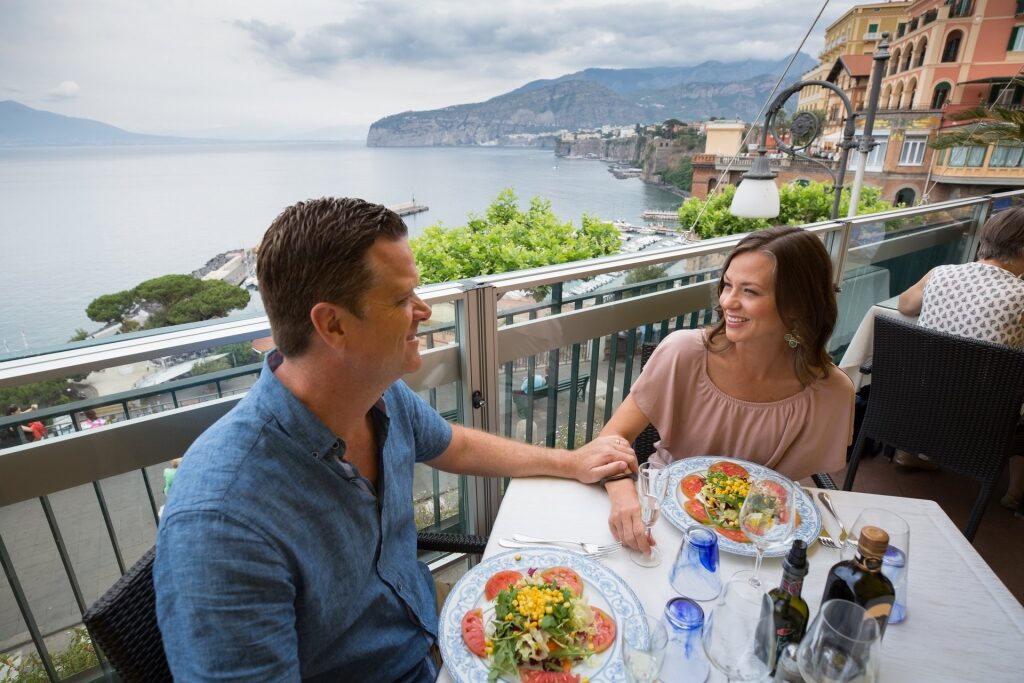
Sorrento
And while sandy beaches are scarce on the Sorrentine Peninsula, their absence is more than made up for by spectacular swimming spots, hidden beach bars, and dinner tables with views across the Bay of Naples to the sunlit slopes of slumbering Vesuvius.
History & Culture
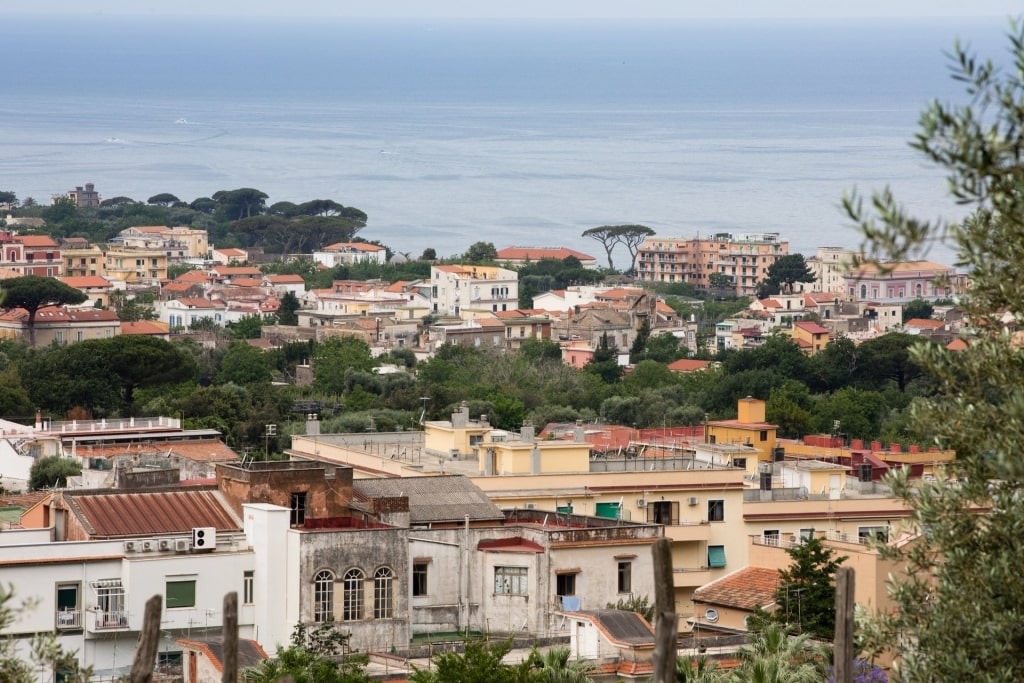
Sorrento
The Sorrentine Peninsula has long exerted a powerful pull on the imagination. The ancient Greeks first founded a settlement there in the 5th century BC before the Romans later moved in, renaming the town Surrentum.
There’s extensive archaeological evidence that they enjoyed Surrentum as a holiday spot, building spectacular villas with farms attached. However, Surrentum was also called “Sirrentum” by some, or “the land of the sirens”.
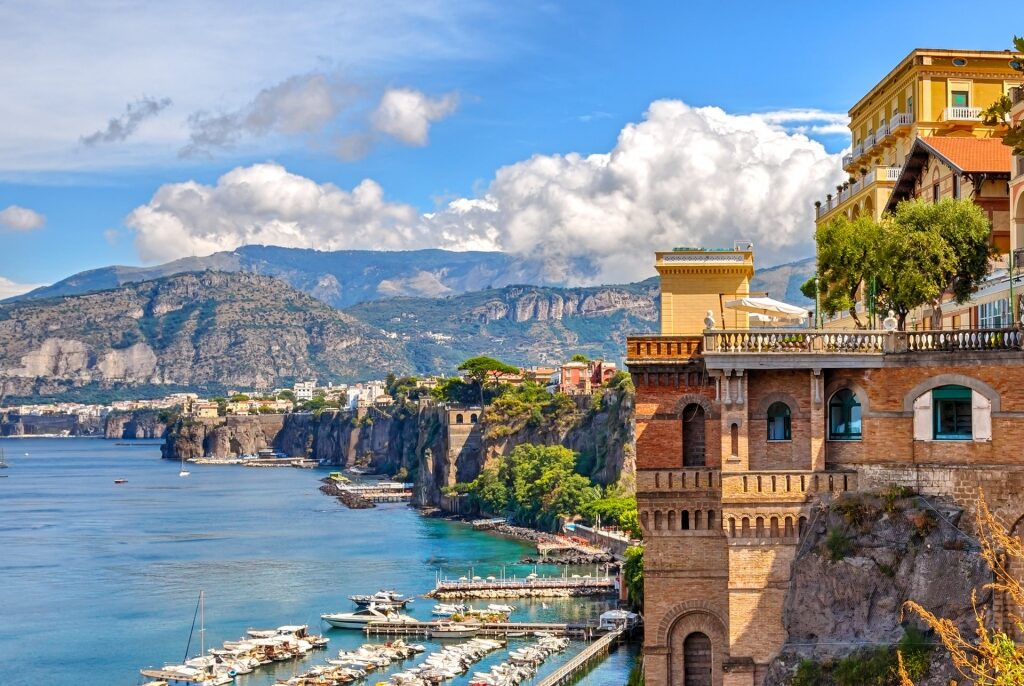
Sorrento
The Greek epic poet, Homer, had the peninsula as one of the places where the malevolent Sirens dwelled. In his Odyssey, it was from Sorrento that the Sirens tempted Odysseus to his doom with their seductive song. Fortunately, forewarned, Odysseus was strapped to the mast of his ship and survived.
After the Romans, Sorrento changed hands several times until it fell under the control of Sicily in 1137. When the city was sacked in 1558 by the Ottomans, this led to the reconstruction of defensive town walls (the remains of which are still visible).
By 1799 Sorrento had joined the Neapolitan Republic, and 62 years later it became part of the Kingdom of Italy.
In the 19th century, high-profile visitors such as Lord Byron, Goethe, and Walter Scott were drawn to Sorrento’s gaudy streets like Italians to a World Cup Final. The philosopher Friedrick Nietzche liked it so much he stayed for six months.
Ever since, Sorrento has witnessed an annual summer invasion of travelers keen to bottle and smuggle home its quintessential Italian coastal verve.
Tips for Visiting Sorrento
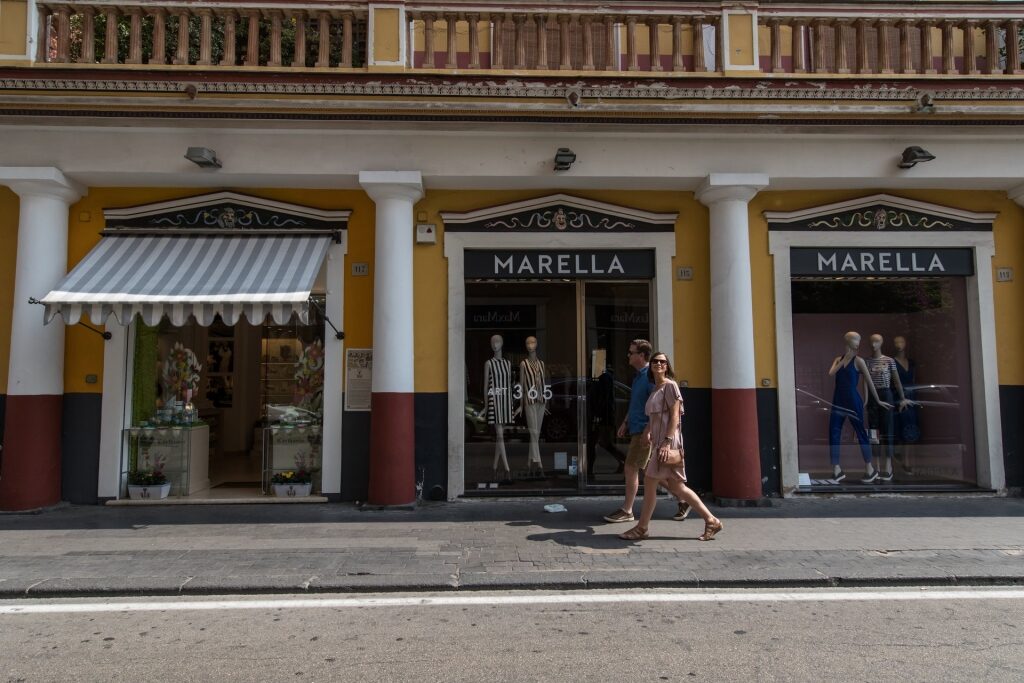
Sorrento
Sorrento, Italy, is a strolling city, a place to meander through the stall-filled side streets beneath tiers of small stone balconies. On your travels, you’ll discover cute boutiques, taste Mediterranean culinary morsels, and pass time sipping macchiatos on street side tables.
One of the best things to do in Sorrento is to take a walk along Corso Italia to get your bearings. The pretty pastel-colored buildings are outshone by the glorious boxes of geraniums on the sidewalk. Awnings tempt you into the shade to browse designer sunglasses or carved wood treasures you’ll begin sizing up for your suitcase.
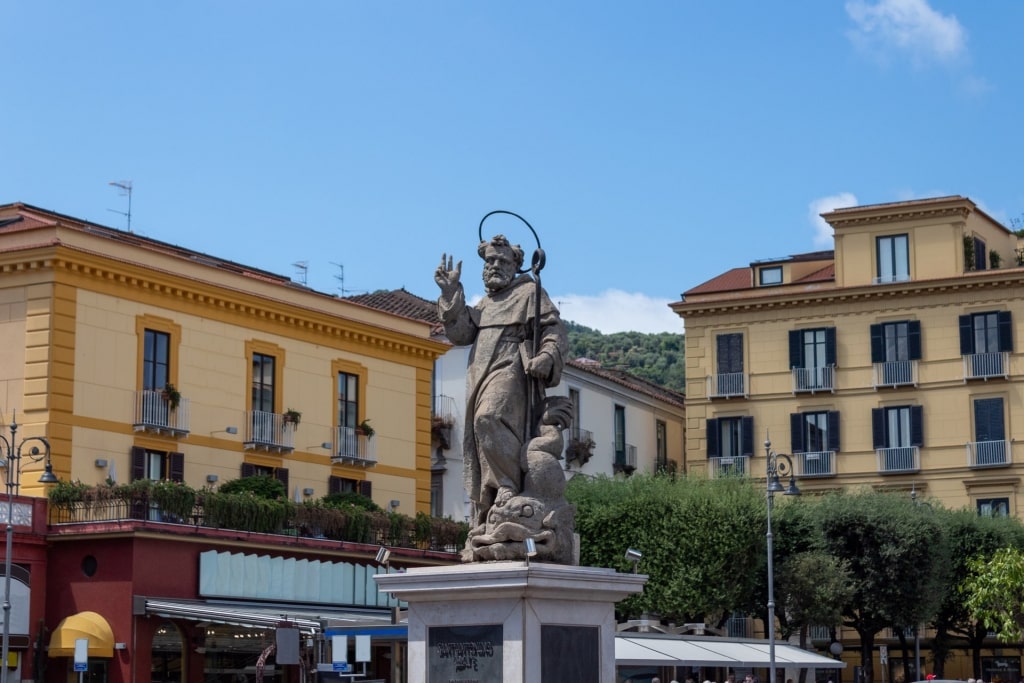
Piazza Tasso
About midway along Corso Italia (it takes about 15 minutes to walk if you’re not stopping) you’ll arrive at Piazza Tasso. The Piazza is named for medieval Sorrentine poet, Torquato Tasso. His caped marble likeness can be found posing in the corner of the piazza.
Piazza Tasso is the people-watching hub of Corso Italia, so don’t be put off by the horse-drawn cart and Vespa traffic—they just add to the excitement. Find a perch among the tables at Fauno Bar and watch life’s passing parade as you listen to the sound of horseshoes hitting warm tarmac.
Take a detour from the present to the past by heading south along via Enrico Carouso. You’ll soon come across the remarkable Valley of the Mills. This sunken slice of Sorrento history is a lush gully of ruined mills that used to be central to local life here.
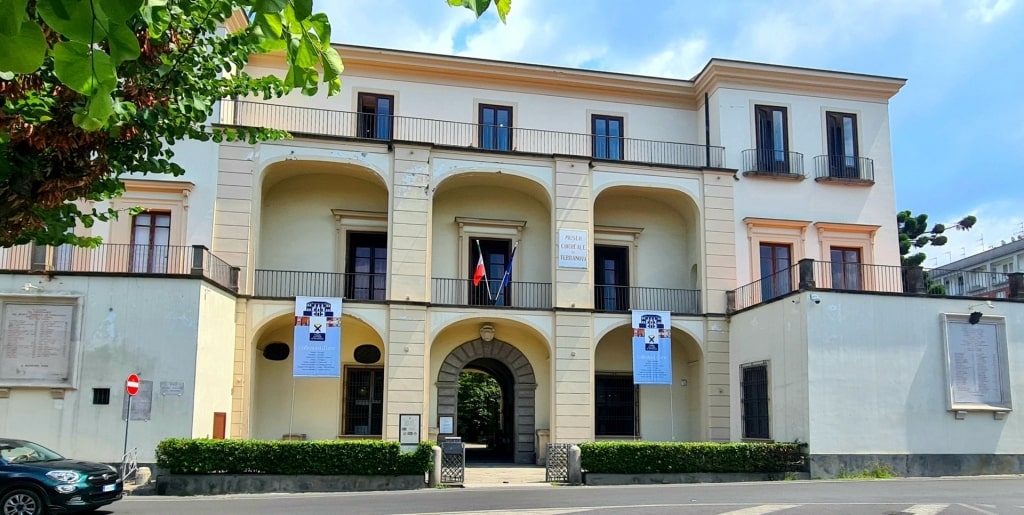
Museo Correale di Terranova Museum Photo by Carlo Dani on Wikimedia Commons, licensed under CC BY-SA 4.0
For a broader examination of Sorrento, Italy, through time, return to Corso Italia and make your way to the grand Museo Correale di Terranova Museum. The former summer residence of the powerful Correale family has become a four-floor shrine to local history and art.
Entering the 18th-century Correale villa feels like a timewarp, a bridge to the opulent lifestyle of the Italian aristocracy. But it’s not an airless mausoleum by any means.
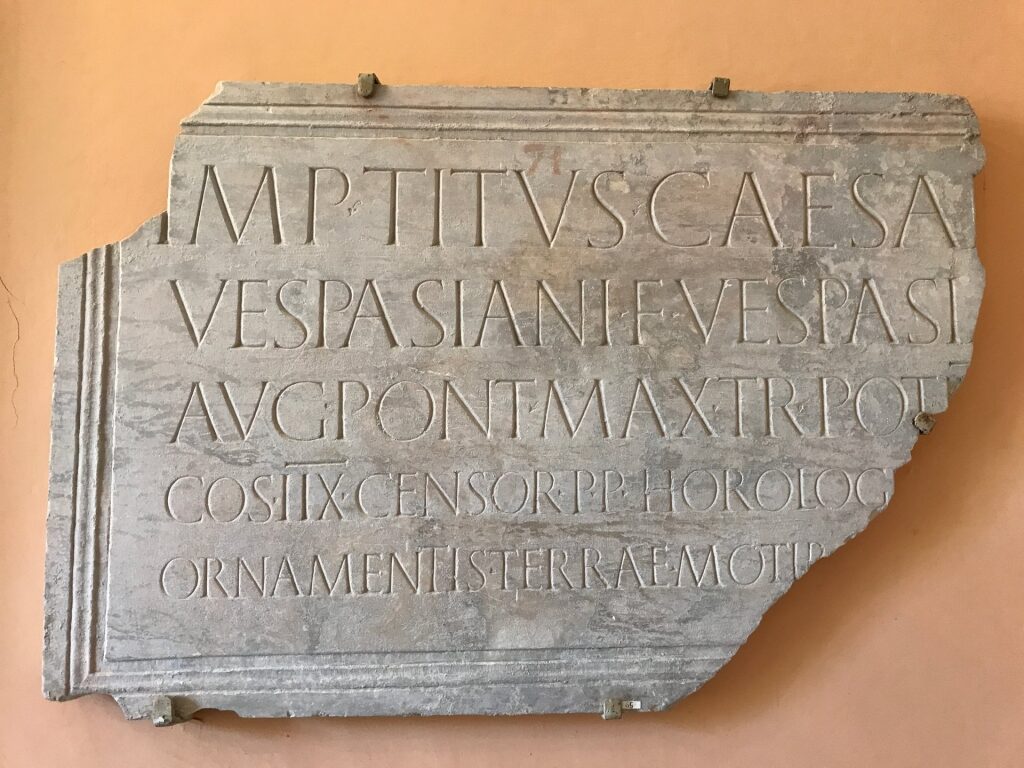
Museo Correale di Terranova Museum Photo by Greger Ravik on Flickr, licensed under CC BY 2.0
On the ground floor, there’s an actively maintained library, its collection built up of works relating to Sorrento. And there’s what some would call the villa’s real treasure outside: the extensive gardens.
Make your way through orange groves and beneath towering palms to the bay views and villa-owning fantasies offered at the Belvedere Terrace. Breathe in the warm, aromatic air tinged with salt—you’ve arrived.
Things to Do & Attractions
Visit Villa Fiorentino
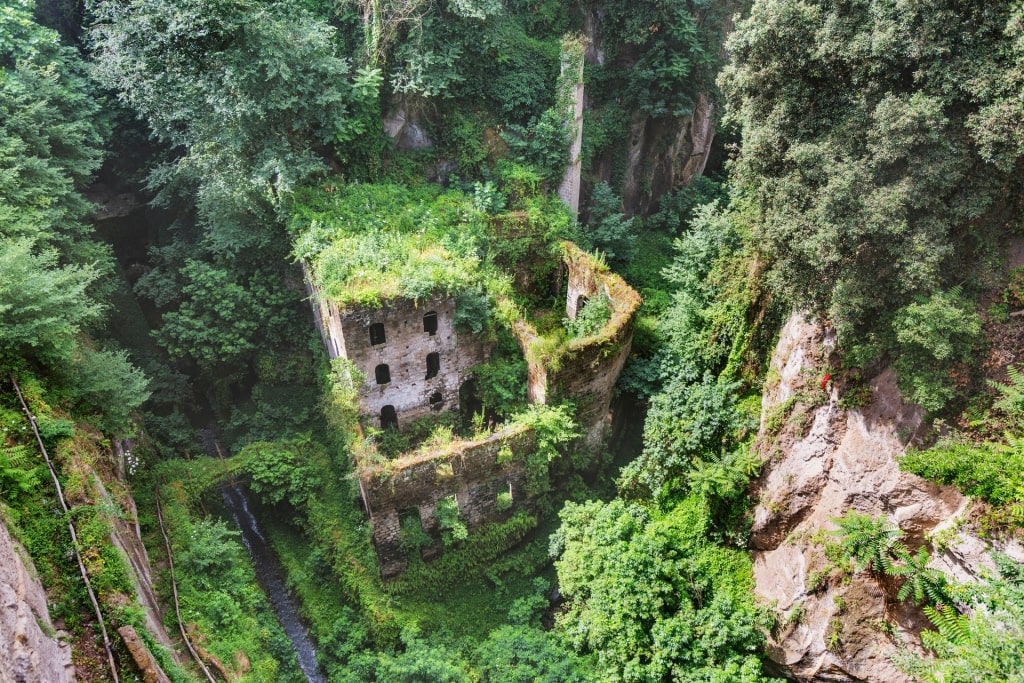
Valley of the Mills
If you’ve already peered into the outdoor archaeological park of the Valley of the Mills, head along Corso Italia until you reach the grand, neoclassical Villa Fiorentino, set back from the street.
This restored villa has become a center for myriad cultural events rotated by a local foundation. Its main focus, however, is regular exhibitions of work by major international and local artists.
Admire the Artistry of Sorrento Cathedral
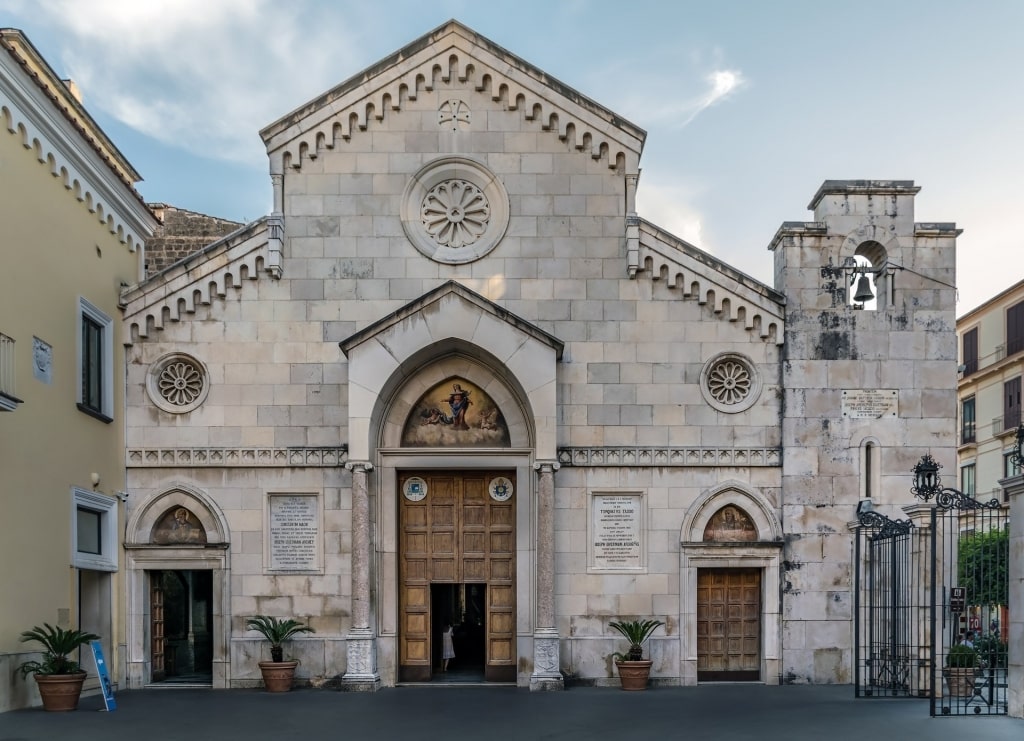
Sorrento Cathedral
Once you’re in the pedestrianized area of Corso Italia, you’ll also be in the vicinity of Sorrento Cathedral.
Dating back to the 11th century, the cathedral was completely rebuilt in 1573 following the Turkish assault. Stop in to see this baroque Duomo’s dazzling ceiling fresco, elegant marquetry, and an impressive 18th-century nativity scene with detailed miniatures.
Shop for Crafts
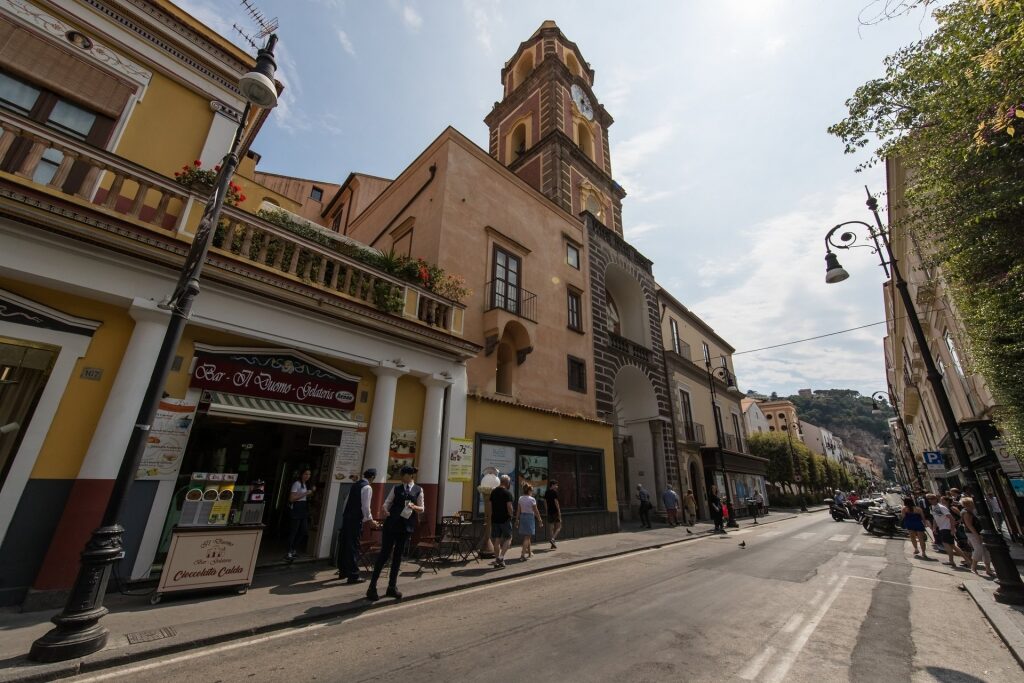
Corso Italia
The backstreets of Sorrento, such as via San Cesareo, are themselves detailed miniatures of Corso Italia. Duck into their lean Roman dimensions to discover hidden bars (have a reviving snifter of limoncello) and artisan workshops.
The gorgeous inlaid wood you’ll see for sale is one of the town’s most famous exports. Find a gaggle of workshops on Via Fuoro and a deep dive into the craft at Museo Bottega della Tarsia Lignea on Via dell’Accademia.
Explore Gorgeous Gardens
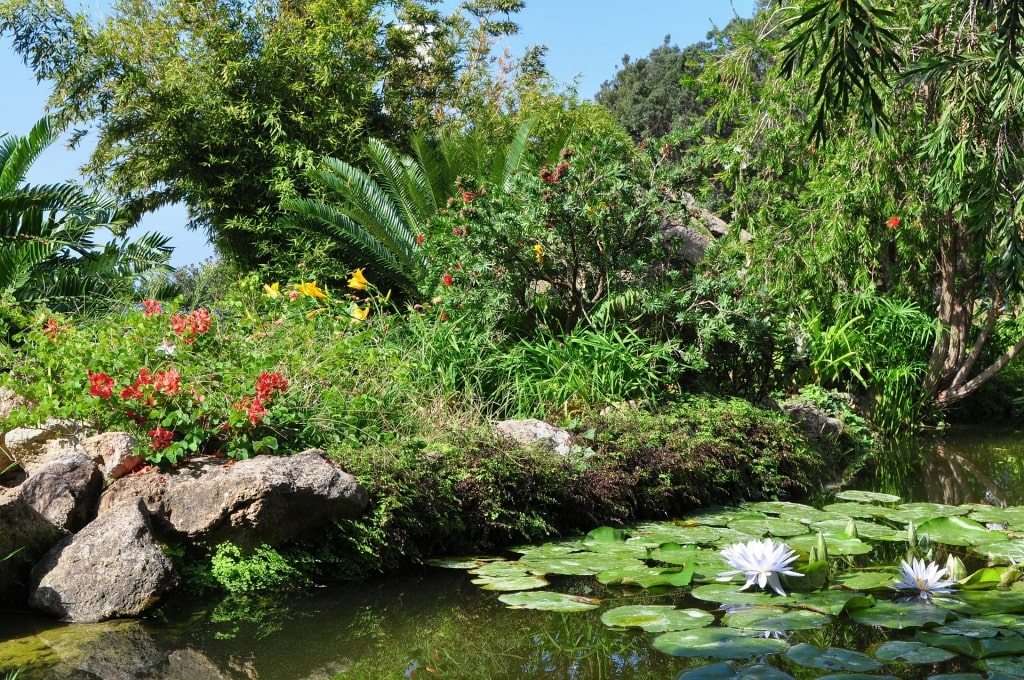
La Mortella Gardens, Ischia
As soon as you gaze upon the verdant countryside and Sorrento’s ebullient urban foliage, you note that this is a region ideally suited to the cultivation of profoundly beautiful gardens in Italy. If there’s time in your itinerary, day trips to gardens on nearby Ischia (La Mortella Gardens) or the Gardens of Caserta (at “the Italian Versailles”) are well worth the travel time.
Of course, having arrived in Sorrento, Amalfi Coast, you’ll be loath to leave. The pick of the parks in town is the cliff-side Villa Comunale di Sorrento with its color and scent drawn from frothy lilacs and tall, shade-giving pines.
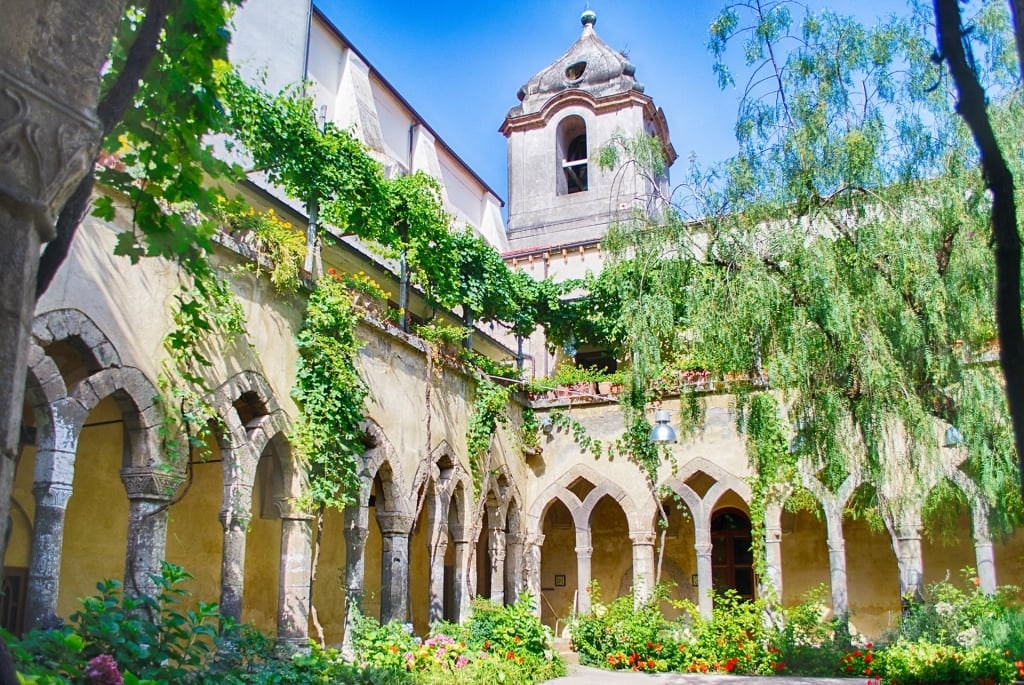
Church of San Francesco
The park also wraps around the Church of San Francesco (built on the site of a 7th-century monastery). Its 14th-century cloisters, bright with greenery and vivid bougainvillea, are insanely popular as a wedding venue—you’ll probably see one in full flow while you’re there.
Head into the church and you’ll find the glowing interior is like walking into a hollowed-out lemon sorbet, albeit one with interesting medieval artworks to chew over.
Bask on Beautiful Beaches
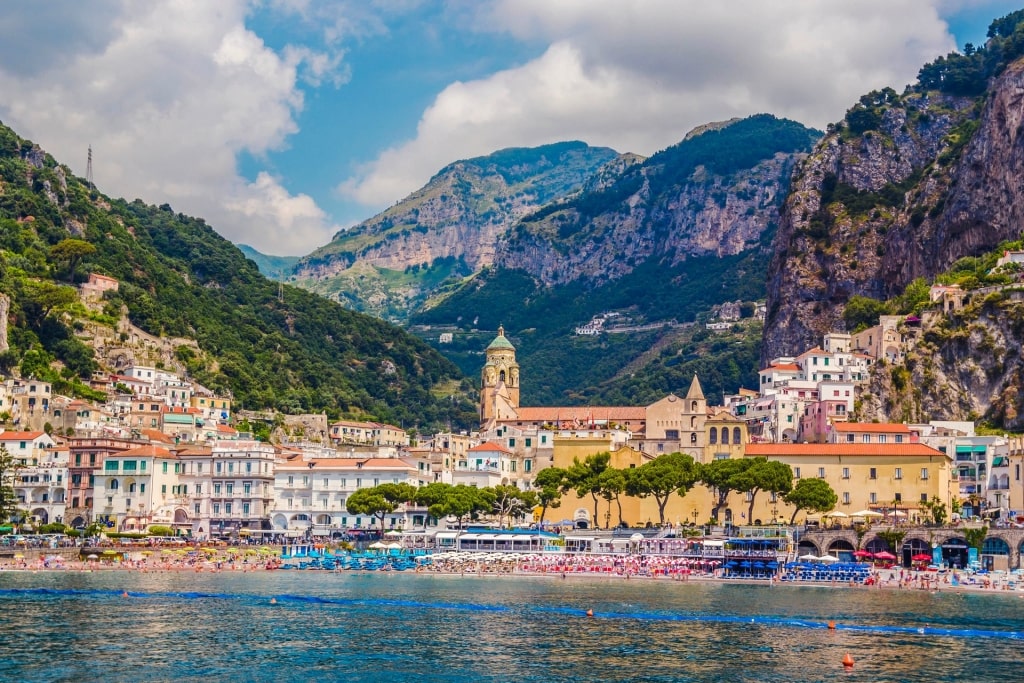
Sorrento
While the park and the Church of San Francesco are great draws, it’s hard not to have your attention pulled away towards Vesuvius glowering across the azure bay. And from the outline of Vesuvius, your eyes will naturally wander to the breath-mint parasols of the sunning Italians laid out on the breakwaters below like sleek seals in D&G sunglasses. Time for a dip.
Make your way to the pedalos and beach clubs below via a path winding down from the park. Marameo Beach Club offers comfort while Bagni Salvatore, with its views of Roman ruins from your lounger, is a real rarity.

Bagni Della Regina Giovanna
However, it can be better to make like royalty and leave the crowds behind. A twenty-minute walk through scented macchia will bring you to Bagni Della Regina Giovanna.
Steps lead down to the crystal clear waters of what was formerly the private swimming spot of Queen Joanna I of Naples. The ruins of Villa Pollio nearby, dating to the first century BC, only add to this spot’s mystique.
Read: Best Beaches in Italy
Food & Drink
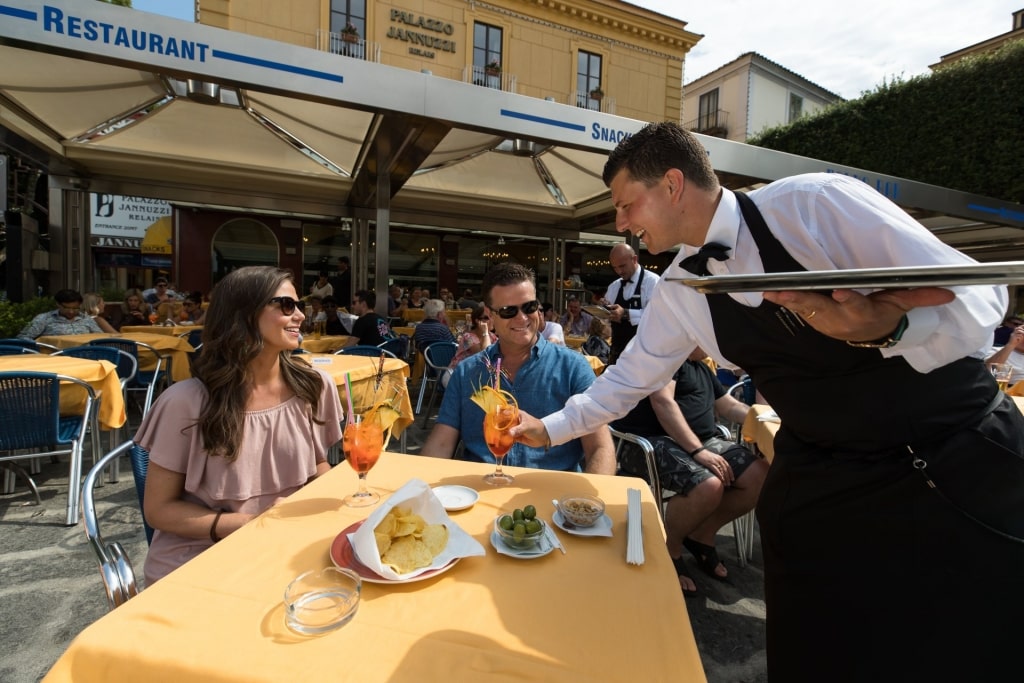
Fauno Bar
With Sorrento, Italy, sitting on the southern end of the sweeping Gulf of Naples, you’ll find its menus reflective of its seafront situation, the Campania region of which it is part, and, of course, its proximity to Naples—the mothership of pizza.
The water buffalo native to the Campanian region have meant that this area has been the wellspring of buffalo mozzarella for over a millennium, thanks to the ingenuity of the Capuan monks. Other local cheeses to look out for on your pizza or your gnocchi alla Sorrentina include smoky scamorza or lighter fior di latte mozzarella (try its braided “treccia” form).
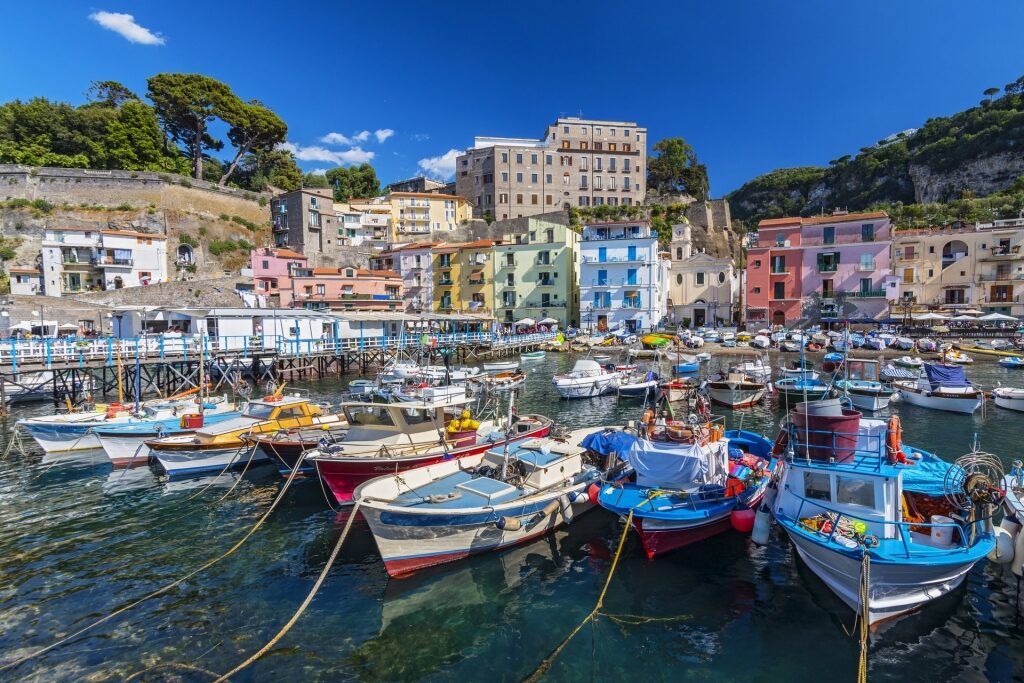
Marina Grande
To experience authentic Italian food culture, make your way down the cliffs to the Marina Grande and see the fishing boats pulled up on the narrow beaches, their catches unloaded, cleaned, and carefully prepared for you to sample in the waterfront restaurants you’ll find here.
Book a table at ever-popular Bagni Delfino for the catch of the day or scialatielli alle vongole, this latter dish marrying clams with a local take on spaghetti.

Sorrento
Pair this with wine from the vineyards that rake contour lines into the Sorrentine Peninsula. Try whites like Greco di Tufo (superb with seafood) and ancient, aromatic Falanghina. Another Roman-era tipple is Lacryma Christi, vinified on the slopes of Vesuvius. And look out for reds made from aglianico grapes (often referred to as the “Barolo of the south”).
The region is well served by the wine list of Ristorante Parrucchiano. The list is best perused under the lemon trees in its famously atmospheric garden.

Sfogliatelle
When it comes to dessert, of course, there’s always tiramisu, but keep an eye out for regional delicacies such as the sugar-dusted sfogliatelle. These heavenly custard-filled pastries are often infused with the essence of Sorrento lemons (adding a deceptive lightness).
Sfogliatelle marries superbly well with the fresh coffee poured from the traditional Neapolitan cucumella pot. This distinctive kettle produces a highly aromatic brew that falls somewhere between an espresso and a filter in strength.
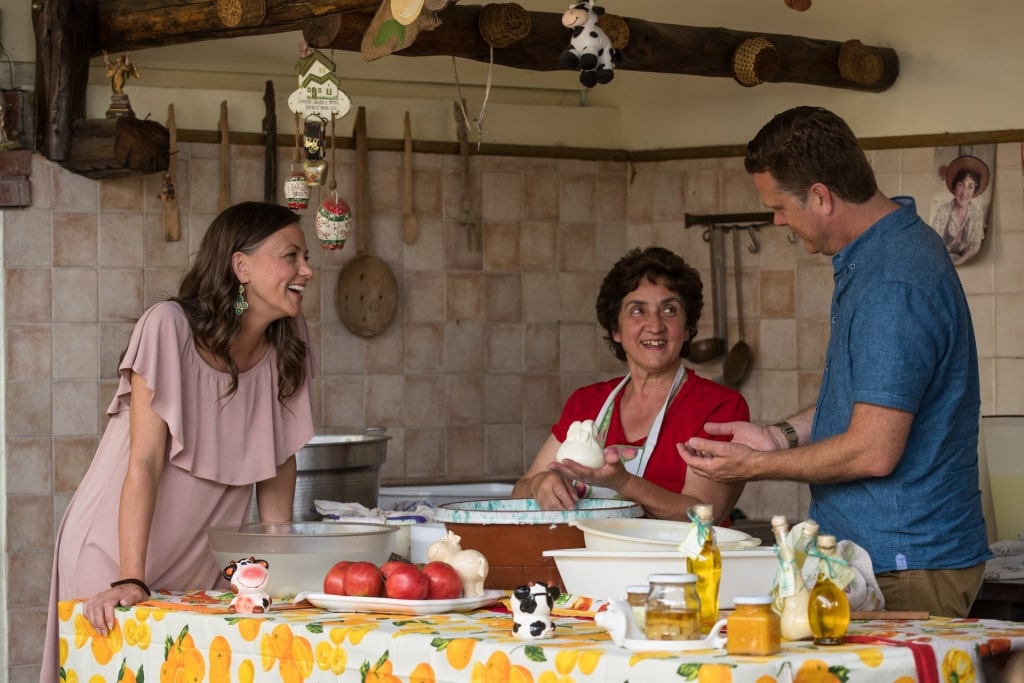
La Sorgente Farm
If you’d like to meet a local food producer, visit La Sorgente Farm located on the hilly outskirts of Sorrento, Italy. Rosa and Maria from this family-run farm will introduce you to the secrets behind olive oil and mozzarella production (get more hands-on with a La Sorgente cooking class). Afterward, enjoy some antipasti there with wine.

Villa Massa Limoncello Distillery
No discussion of Sorrento’s culinary treasures could be complete without limoncello. The bright yellow nectar made from the zest of lemons was created here. It somehow manages to translate the sunshine bouncing off the dimpled skin of a mammoth Sorrento lemon directly into a tiny chilled glassful.
Discover more about limoncello production by scheduling a trip to the Villa Massa Limoncello Distillery where they produce a popular limoncello from a century-old family recipe.
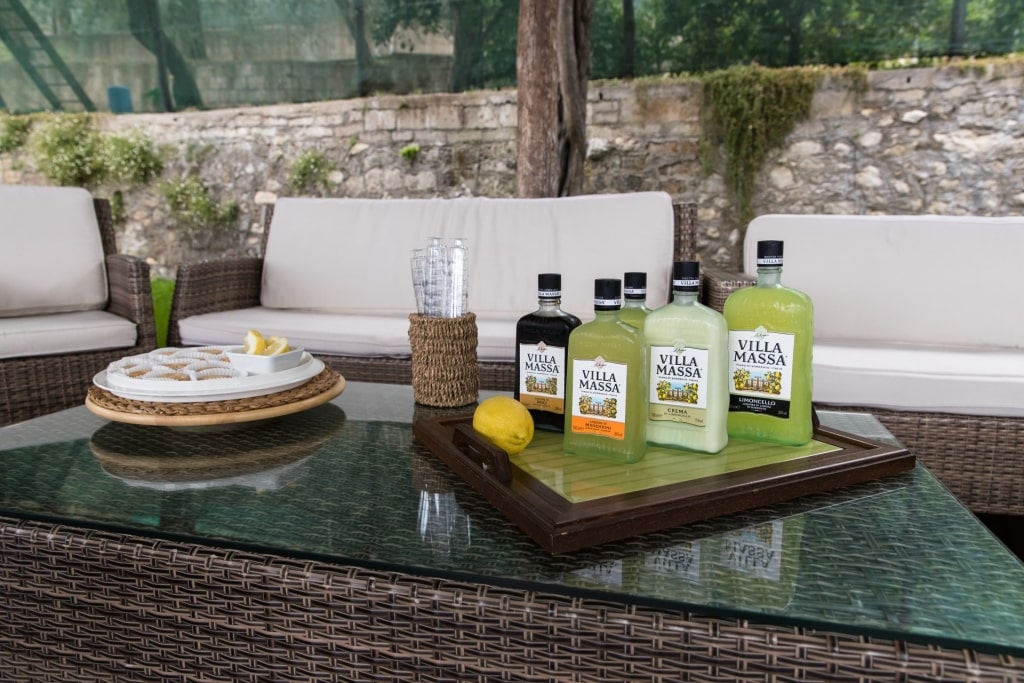
Villa Massa Limoncello Distillery
While on your visit to Villa Massa, you’ll walk beneath the traditional chestnut frames that shield the lemon groves from the worst of the winter weather. And of course, there’ll be a tasting of that vivacious digestif to conclude.
Weather & Climate
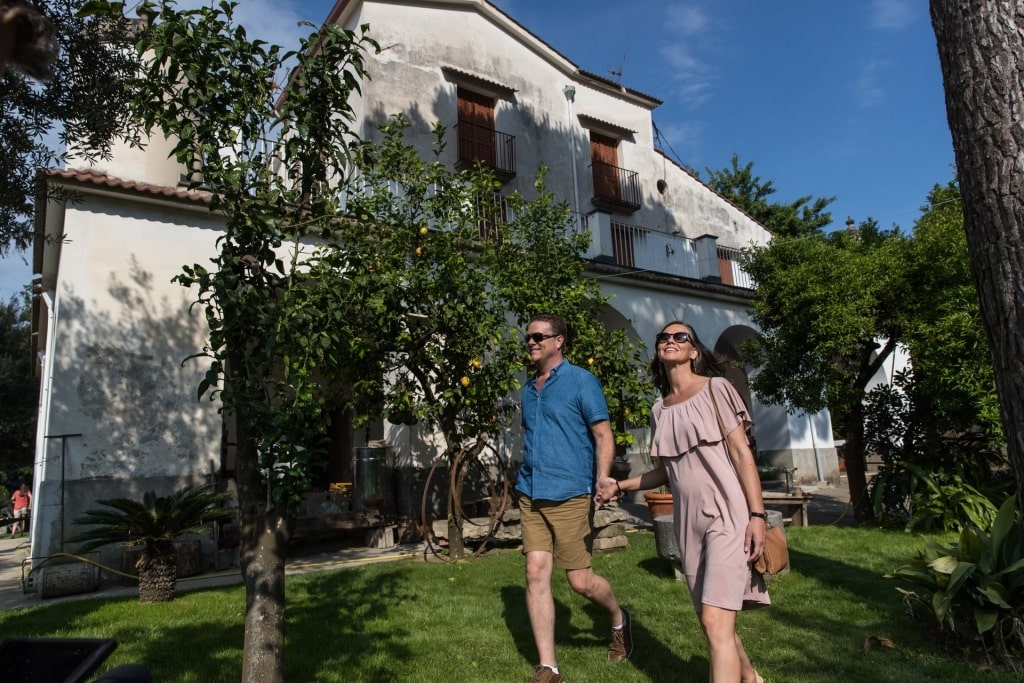
Sorrento
Sorrento’s lemon trees didn’t become this bountiful thanks to a damp squib of a climate. The brightly colored facades of the buildings are warmed by the Mediterranean sun all summer long (and through much of spring), with average highs of 84°F.
You’ll find those temperatures—and often hotter—during the Italian summer months of June, July and August. Sorrento’s sea-cliff situation ensures cooling breezes are always available near the ocean-facing side of town (and if you’re on the other side of town, well, there’s always some wine being chilled).
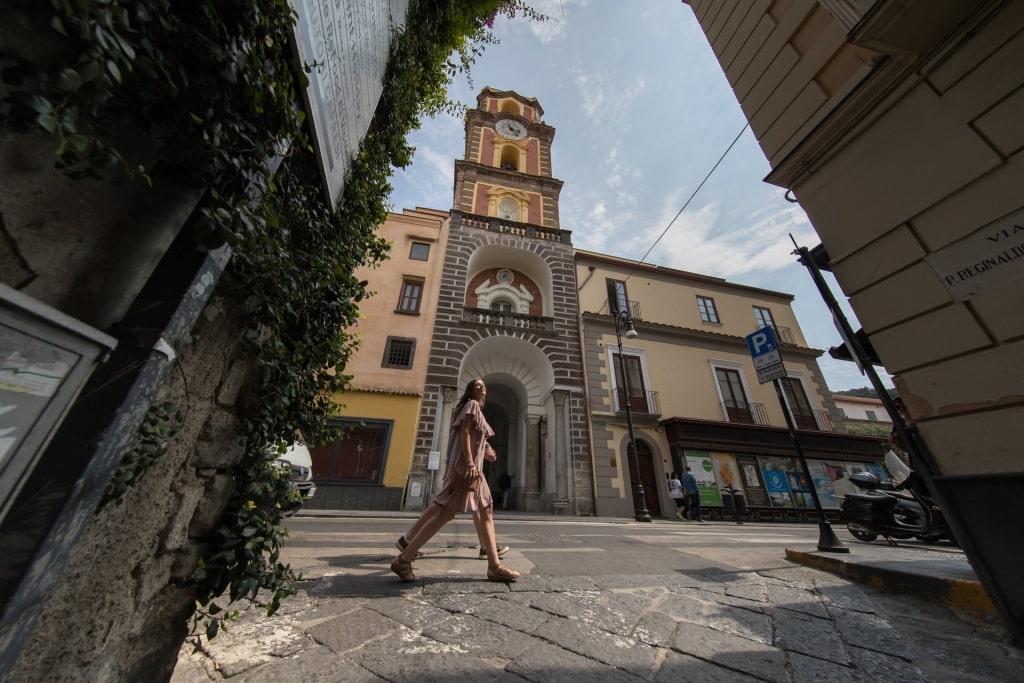
Sorrento
The months of May and September, although accompanied by a small chance of rain, are excellent times to visit Sorrento. It’s less crowded and the weather is an extremely enjoyable range between 68°F and 77°F. Also in May, you’ll walk into Sorrento at its best—in full, glorious bloom.
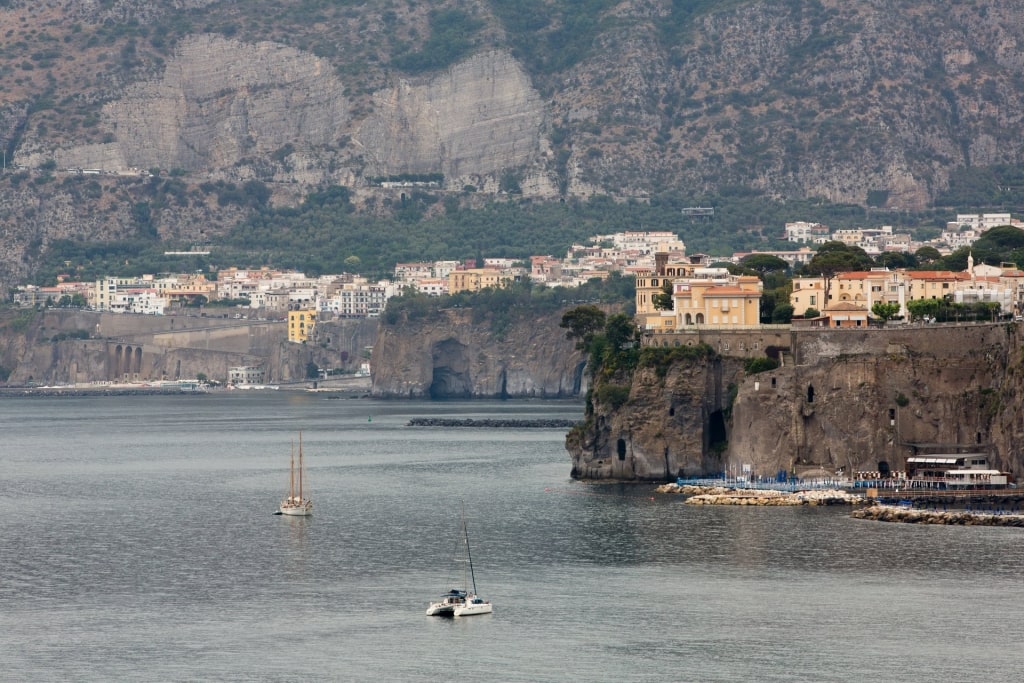
Sorrento
Experience the epitome of the Italian summertime on a cruise to the Amalfi Coast. Browse our cruise itineraries online and book an Italian vacation that’ll burn as brightly in the memory as a sip of delicious limoncello.
